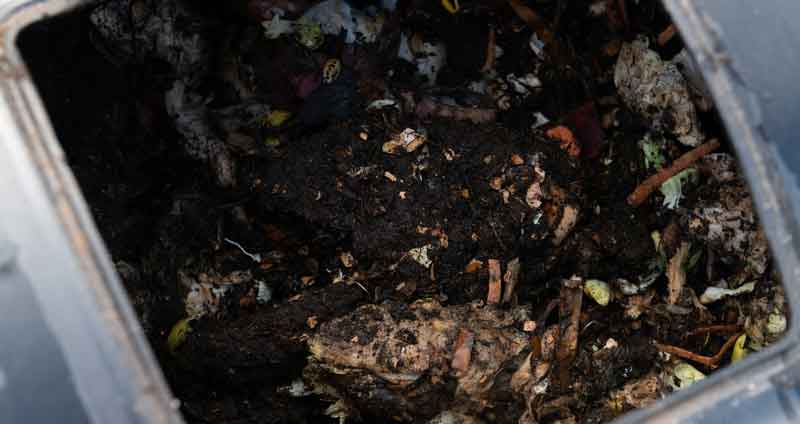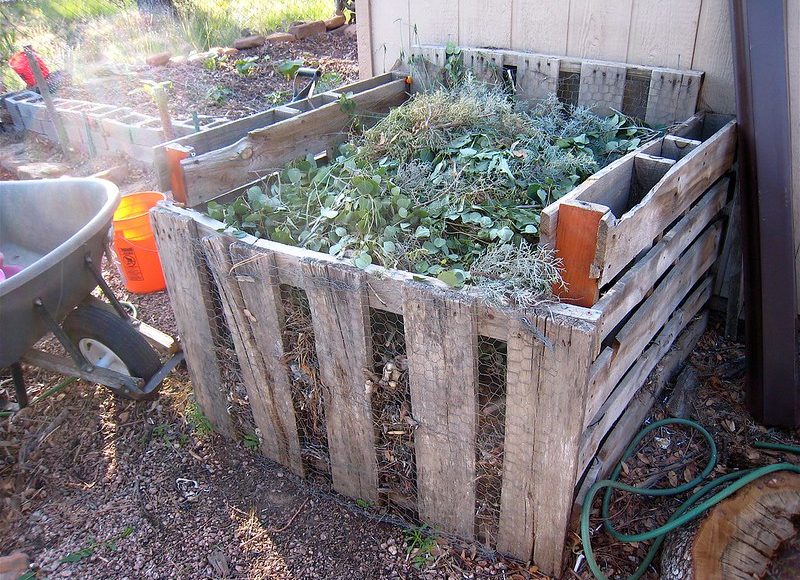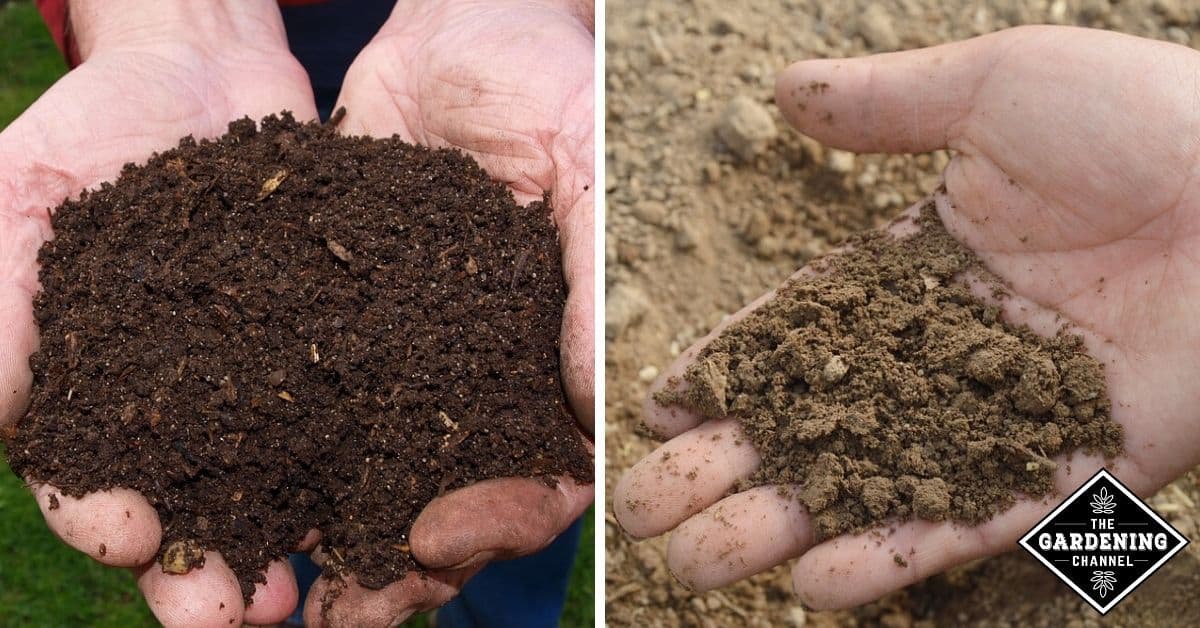
There are advantages to adding soil to compost, but the soil must first meet the prerequisites in order to be combined in and benefit the decomposers.
The quality of compost is increased by adding soil. The dirt aids with aeration and provides nutrients. The addition of soil increases the amount of microorganisms in the compost, which speeds up the breakdown process and fills empty areas.
The decomposition process benefits from the addition of soil to compost. However, as you will see in this article, there are several dos and don’ts when it comes to adding dirt to compost.
Table of Contents
Can you Add Soil into a Compost Bin?
You may transform your organic waste into a nutrient-rich soil amendment by using compost bins. But what if you want to fill the compost bin with soil?
A compost bin may contain soil, but it must first be filtered and blended with additional ingredients. It won’t rot as quickly as other items, so it shouldn’t be the sole thing in the compost bin.
The compost pile will receive more nutrients if soil is put into the compost bin.
By adding soil to the compost container, two crucial components are provided:
- a catalyst for compost
- Inoculant for compost
Numerous advantageous microorganisms are added to the compost when soil is added, hastening the composting process. Even compost quality is enhanced by it.
Additional benefits of adding soil to compost include:
- The noxious fumes emitted are neutralized by composting the soil, which serves as a biofilter. By covering the heap with a couple of inches of topsoil, compost odors can be eliminated.
- Composting will stop fruit flies from taking over. The flies or ants won’t be able to get to composting items like fruit or kitchen wastes if there is a layer of soil between them and them.
Soil can be put to a compost bin since it has the dual benefits of accelerating the composting process and avoiding common issues like odors and insects.
Adding soil to compost is one approach to hasten the process of creating finished compost with a better texture.
What Type of Soil is Good to Add to the Compost

Compost quality can be raised by adding dirt to the compost. There are numerous types of soil that can be used, including sand, clay, and loam, but the one you choose will depend on the goals you have for your compost pile.
Sand, clay, and silt make up the soil type known as loam. Because it offers an excellent balance between nutrients and water retention, it is frequently used in gardening.
Additionally, the loam aids with aeration, which enhances drainage. Another form of soil that can be added to compost is clay. Compared to sand, it has more nutrients, but not as much as loam.
The ideal kind of soil for compost is loam. This is so that loam, a balanced, healthy soil, has an optimal composition of all the components including sand, silt, clay, and decomposing organic matter.
You won’t always locate the ideal soil for your compost, though. Not to worry. the addition of any soil. The only thing you need to make sure of is that the soil doesn’t include a lot of rocks or stones or artificial additives.
Because most herbicides and pesticides are hazardous to composting microorganisms, you should avoid gathering soil from fields where you are unsure of the types of chemicals that have been used.
Here is a fantastic compost booster we use from Amazon that boosts the microbial count and guarantees the compost completes its task more quickly. I think it’s worth a look!
How Much Soil To Add To the Compost
Organic waste is converted into nutrient-rich soil by composting. Depending on the materials being composted, the process can take up to a month to finish. Knowing how much soil you will need for the compost pile is also crucial.
As a general guideline, one cubic yard of organic material is required for every 100 square feet of garden space. This quantity fluctuates, though, according to the organic material you utilize in your pile and the type of soil you’re attempting to build.
Adding about 2 inches of earth would be plenty if your only goal is to cover the smell or scare away flying insects. According to the regulation, you shouldn’t use more than 10% of the soil’s total volume.
However, for the greatest results, mix in two to three shovels of soil for every 6 inches of composted material.
What Can go Wrong With Adding Soil to Compost
Introduce too much Moisture or Water
Composting with soil can have a number of drawbacks. For instance, it can result in an excessively wet compost. The water content of the compost will rise, making it more challenging for the bacteria to decompose the organic material.
Because it will make the compost moist, wet soil could become a potential issue. This can result in a slimy pile full of pests. Moisture is beneficial for the composting process, but too much of it might interfere with decomposition.
Additionally, it’s probable that adding dirt to your compost will lower its quality and reduce its utility as a fertilizer. This is because the soil has a lot of minerals that other organic materials, such leaves or grass clippings, lacks.
Additionally, it can include weed seeds, which would contaminate the compost pile, make it harder to stir, and reduce the soil’s effectiveness.
It Can Invite Unwanted Pests
The compost will take longer to decompose if there are unwanted weeds or pests. Another issue that could make it challenging to add dirt to compost is the grass. Grass cuttings are produced in massive quantities.
Never pile up a lot of grass clippings in your compost. Always scatter them to create a fine layer. Don’t forget to add dry ingredients to balance them out.
It Can Change the Acidity of The Compost
Compost that is balanced is crucial. Compost has a little acidic character. Wetter substances, though, can occasionally throw off the equilibrium.
The compost becomes very acidic as a result. Citrus fruits in excess can also raise the acidity level.
Put some ground lime or wood ash on the surface to balance the acidity. You can add browns and other fresh green materials to the compost to reduce the acidity if it is too damp.
So, these are some considerations you should make as you begin your composting process. Otherwise, all of your labor will be for naught.
When is the Best Time to Add Soil to a Compost Bin?

Reduce the amount of waste you send to landfills by using compost bins. Organic waste is transformed into a nutrient-rich soil amendment through a natural process. However, there is a proper place and time to add dirt to your compost bin.
The rate of decomposition of the compost can be slowed down by adding too much soil or accelerated by adding too little soil. Every year, or every six months if you have a big bin, add two inches of new soil.
The timing of adding new material to the compost pile is one of the key elements in composting success. When too much is added at once, anaerobic conditions can develop. These conditions will prevent decomposition and result in unpleasant aromas.
Your compost’s age will tell you how much work it has completed and how far along in the decomposition process it is. The more stable and biologically active your compost is, the older it is.
– Use the compost. About one month before planting, apply 1-3 inches of the finished compost and work it into the top four inches of soil.
Since the majority of herbicides and insecticides are hazardous to composting microorganisms, you should avoid collecting soil from fields where you are unsure of the types of chemicals that have been used.
This fantastic compost booster, which we get from Amazon, boosts the microbial population and guarantees that the compost completes its task faster than usual. To my mind, it’s worth a look!
The process of composting produces soil that is nutrient-rich. Depending on the items being composted, the process could take up to one month to finish. The amount of dirt you will want for the compost pile must also be known.
The Takeaway
Generally speaking, each 100 square feet of garden space requires one cubic yard of organic material. Nevertheless, this quantity fluctuates according to the type of organic material you utilize in your pile and the type of soil you are attempting to build.
